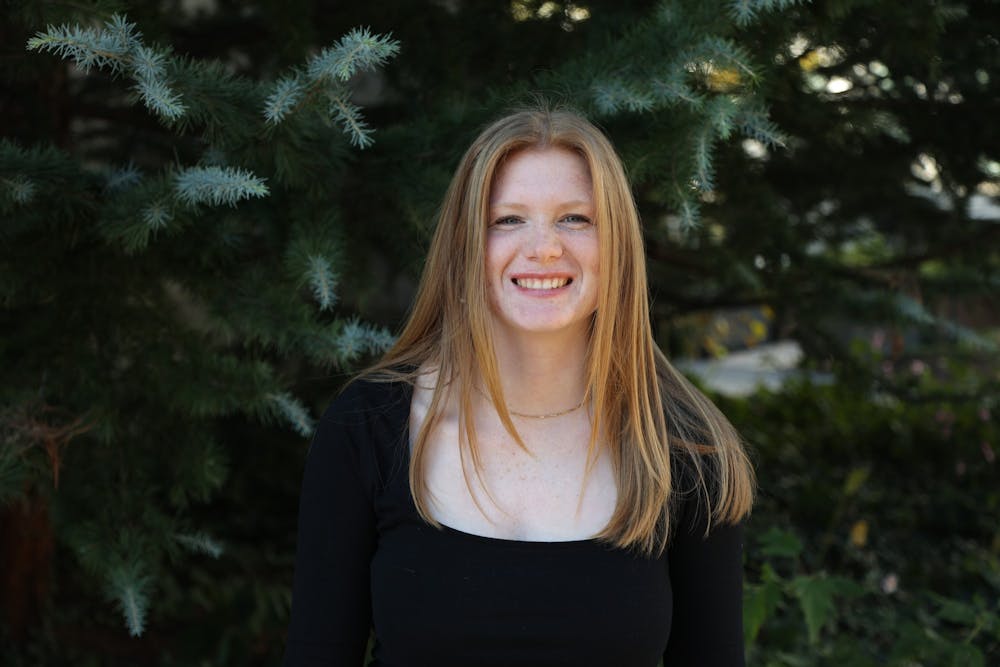I decided to take a women’s, gender, and sexuality studies class this semester. Truthfully, I needed a general elective credit and could have taken a wide variety of subjects, but I chose this one, Women’s Voices Through Time, WGSS-150, because I was interested in learning more about women and their actions in mainstream history. As a woman, I was excited to learn more about history that relates to my identity.
On the first day of class, I walked in and watched my other classmates file inside. As I counted down the time on the clock before class started, I messaged my friends with a poll, asking if they thought there would be any men in our class. We guessed none. Class started, and as I looked around I saw that the students in the class were only female-identifying people. We had guessed correctly.
At that time, I felt two conflicting emotions. First, I was comforted in the sense that this demographic made the class a safe space for myself and others to be heard. Second, because the audience that needs to learn most wasn’t there, I felt doubtful about the potential for a larger impact. I could not get a question off of my mind: if only women are taking these classes, how do we make women’s history a part of mainstream learning?
Women’s history struggles to make it into the K-12 curriculum and is continually left out of history requirements. A 2017 study by the Smithsonian found that out of the 737 specific historical figures noted in K-12 educational standards in social studies across the nation, 559 are men and only 178 are women, about one woman for every three men. The study also notes that of those 178 women, 98 of them will only appear once in the social studies standards.
The lack of women in K-12 curriculum is already concerning because students are not taught the full scope of history and because women are not as valued in the required history in American schools. Knowing this, I hoped a class dedicated to understanding history, and how women were a part of it, would be a supplement for students who lacked this knowledge from their early schooling. Unfortunately, these classes are lacking the students who need to learn women’s history most.
History including women is relegated to a specific title, ‘Women’s history.’ Much like the NBA and the WNBA, there is history, and there is women’s history. These courses are not requirements but instead are seen as extra additives for people with special interests and not important enough to be included in mainstream history. Not only does this separate women’s contributions to a specific section of history that is rarely required to be taught, but it also turns men away from taking the courses. There is a noticeable lack of men who enroll in these courses to learn more about history not centered around their gender. This needs to change.
It is important to include that oftentimes women’s studies classes are safe places for women and female-identifying students to express their thoughts and have open discussions without a male voice interrupting them or disavowing the truth in their perspectives. I am advocating for men to take these introductory women’s studies courses with good intentions and an open mind. I am sickened by those that would enroll only to meet women or attack the subject matter with a closed mind. I want to instead see this history valued by those who are not women because they understand that learning this history is essential to learning about all history.
Women’s history is not only for women. There is a whole area of knowledge going unseen because it has the word woman in front of it. I urge those who are not women to take an introductory course in women’s studies and women’s history because without it, you will be missing something in every facet of history. Showing interest in women’s history is how we get women into common ‘history.’
Anna Gephart is a junior in the School of Public Affairs and a columnist for The Eagle.
This article was edited by Jelinda Montes, Alexis Bernstein and Nina Heller. Copy editing done by Isabelle Kravis, Sarah Clayton, Natasha LaChac, Luna Jinks, Leta Lattin.





